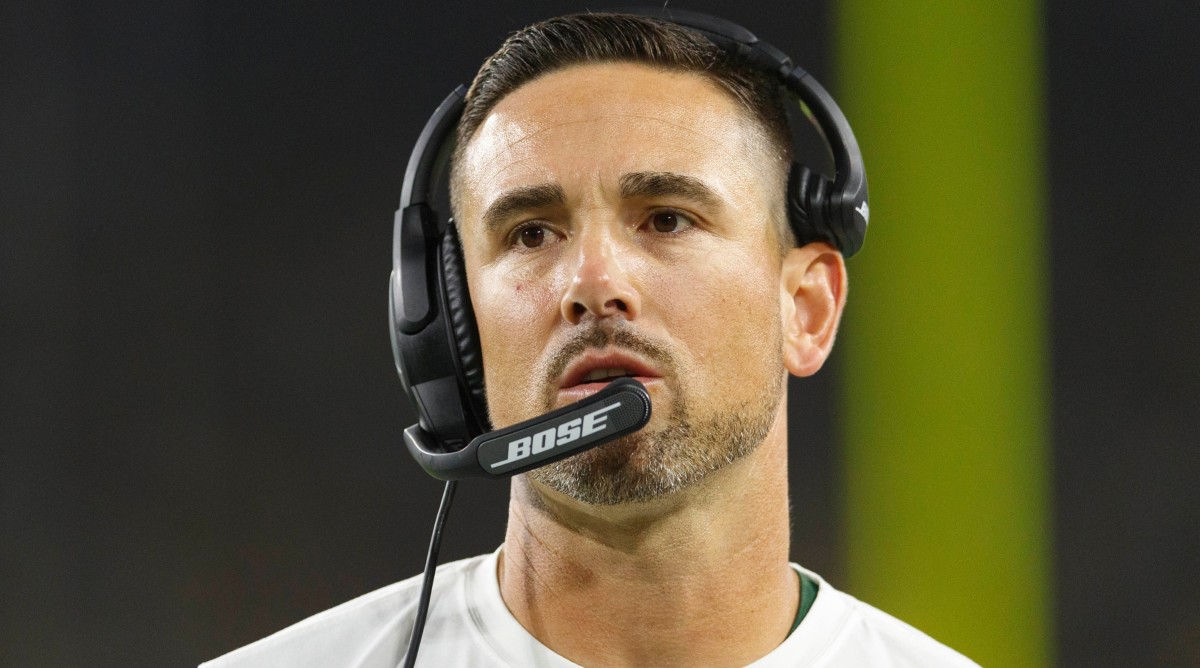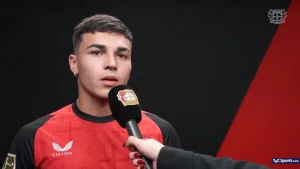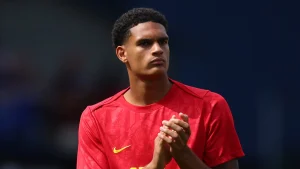
The Packers’ self-inflicted mistakes cause them to lose to the Giants

The Green Bay Packers’ loss to the New York Giants on Monday night was caused by a number of self-inflicted mistakes. Despite the Giants’ best efforts to support Green Bay, the Packers were unable to overcome their own obstacles in all three phases of the game, and ultimately that proved to be too much to overcome. This game wouldn’t have been as close if it weren’t for two New York giveaways that the Packers had little to do with.
Following the game, Matt LaFleur said, “We didn’t deserve to win the game.” We were not very good in any of the three phases. had an excessive number of turnovers. had penalties, far too many errors, and poor execution. That’s too bad because we had a fantastic chance, managed to tie the score and get back in the game, but ultimately fell short.
With this loss, Green Bay’s chances of making the playoffs were severely damaged. They are now among the five teams in a sizable group, all of whom are 6-7 on the season and fighting for the final playoff spot. But despite its performance on Monday, the Packers are still very much in charge of their own fate.
Here is everything you need to know about the Packers’ performance against New York after going back to watch the game again and looking over the important statistics and figures.
two quarterback hits and zero sacks

The defense should have had the chance to pursue quarterback Tommy DeVito if the Packers had been able to slow Saquon Barkley. They largely succeeded in the first step, allowing Barkley to gain no more than 2.5 yards per carry until the final two Giants drives. Where Green Bay fell short, though, was in turning pressure plays into sacks; they managed just two quarterback hits and zero sacks overall. With Devito’s 53 percent pressure to sack rate being the highest this season as well, New York came into the game allowing the most sacks in football—and it’s not even close. DeVito extended drives and kept the offense ahead of the sticks by gaining significant yardage with his legs as a result of the Packers’ inability to produce sacks. He used some read-options that Green Bay couldn’t counter to finish the game with 71 yards on ten tries. This is now the fourth 200-plus rushing yard game that Green Bay has given up, thanks to DeVito.
“He’s an incredible rival,” Matt LaFleur remarked. Without a doubt, we were cutting him off left and right. They had 69 sacks going into this game, and we ended up with, I think, none. Give them credit; it’s clear that they outplayed and outcoached us. However, I thought that rather than simply missing the quarterback, we frequently had fly passes that went straight by him.
Love averages 5.6 yards per pass attempt.

Jordan Love completed 25 of 39 pass attempts for 218 yards and a touchdown with an interception towards the end of the game. Still, those figures don’t provide a complete picture. Over the season, Love’s average of 5.6 yards per pass would have placed him in 31st place. Love looked uncomfortable overall and was inaccurate from the very first snap. The Packers haven’t faced blitzing defenses before, but the Giants, who like to blitz, threw a lot of intentional pressure at them. Los Angeles and Kansas City have both applied a lot of pressure in recent weeks. Ultimately, it was hard to establish any rhythm because Love and the receivers weren’t always in sync during the passing game.
It seemed like we were generally off in the pass game, according to Matt LaFleur. “It’s inevitable that some throws will be missed here and there. As far as persevering in the fight goes, I felt he was fairly strong-willed. threw a touchdown pass at the end of the game, evidently, and another that we failed to intercept. However, overall, it just wasn’t good enough throughout the entirety of the game.
That being said, the two passes to Malik Heath at the end of the game were outstanding, and the offense did manage to score a touchdown in the final moments of the game, something they had not done in the first four games, this time with the help of a fumble by Barkley. I also felt Love did a great job adjusting protection at the line of scrimmage, especially in the second half.
Each carry for Dillon and Taylor was 4.4 yards.

AJ Dillon and Patrick Taylor together gained 4.4 yards per rush on average when running against the Giants. I believed that the Packers had more opportunities to lean into the run game, particularly in the first few minutes of the game, especially in the space between the tackles. It’s not as if the run game was neglected by any means—Dillon and Taylor finished the game with 19 carries—but the Giants defense was allowing 4.8 yards per carry this season as a result of the struggling pass game. Despite the fact that the Packers have been successful in recent weeks and even in the first half of this game with planned touches for Jayden Reed behind the line of scrimmage, the Giants had those play calls figured out pretty well by quarters three and four. On one occasion, it ended a drive by forcing the offense behind the sticks, and on another, Green Bay was unable to convert the two-point attempt. A strong running game relieves some of the passing game’s playmaking pressure.
Anders Carlson’s field goal was missed.

While it was expected that Anders Carlson would experience growing pains, these inexperienced errors have been pivotal in deciding multiple games this season. Carlson lost to New York by two points due to a missed field goal. Two points was lost to Denver due to a missed field goal and an extra point in a four-point defeat to Pittsburgh. He has recently missed three field goals in the last five games and an extra point in the last four. In general, the special teams team keeps making errors; Keisean Nixon fumbled once, and they also committed two penalties, which raises their league-high total in that area.
Football-related situational issues

The Packers’ difficulties in this game were primarily caused by third downs and their inability to convert red zone trips into touchdowns. Green Bay found itself in several third-and-long situations, which, for a pass-happy team, meant instantaneous destruction. These situations were frequently the result of incomplete pass attempts or penalties. The Packers only made five of their fourteen third down attempts. To put things in perspective, would finish the season ranked 25th, a long way from Green Bay’s sixth-best rate going into this game. The Packers only scored touchdowns on two of their five trips into the red zone. In contrast, the Giants went 3-for-4, which made a significant difference in this contest.
After the game, LaFleur stated, “You have to play good football and you have to execute.” Complementary football is required; all three phases must be played. I felt that there were too many penalties early in the game, which hurt us. However, you could examine and criticize every aspect of the game. Special teams were not up to par. The defense was insufficient. The offense was insufficient. collectively, and you lose the game if you perform poorly in any one of the three phases.”
Too many errors to tally

I’m not sure how many things went wrong exactly, so even though this is “Behind the Numbers,” we’ll just call it “too many.” This game had a lot of trap-game vibes going into it because the Giants, who were 4-8 on the season, were an uninspired team facing the Packers, who had just won two major games. From the beginning of the game, this Packers team found even the most basic tasks to be very difficult. There were problems in all three phases, including turnovers, penalties, players who just didn’t make plays, and a whole lot more. After a series of mistakes of their own, New York was gracious enough to allow the Packers to hang around, but ultimately, Green Bay was unable to get out of their own way.
8 plays, 57 yards
/cdn.vox-cdn.com/uploads/chorus_image/image/65800502/1190344177.jpg.0.jpg)
Tommy DeVito and the Giants offense received a red carpet treatment from the Packers defense with 1:33 remaining in the game. The Packers, who frequently defend against the downfield pass, created a lot of space underneath for the New York pass catchers. During that drive, DeVito completed four passes, none of which came close to being contested. The Packers’ defensive game plan is pretty much the same whether they are facing Tommy DeVito or Patrick Mahomes. Although the strategies used by each quarterback and team differ, the end result is usually the same for Green Bay: opponents score between 20 and 24 points, succeed on the ground, and have some easy opportunities to catch and run. This Green Bay defense does not dictate, not even when facing a third-string quarterback who has shown difficulty under duress. The offense usually has the upper hand, leaving the Packers to adjust and play catch-up.
Regarding that last push, LaFleur said, “We obviously gave up too many chunk plays.” “Lost our leverage twice and abandoned our explosive plays, as I mentioned earlier. Vibrant plays result in points. In that dire situation, you are unable to do that. On one of the throws, we were completely off; they got an easy hitch and gained about ten yards. It was simply a bad ball.”







